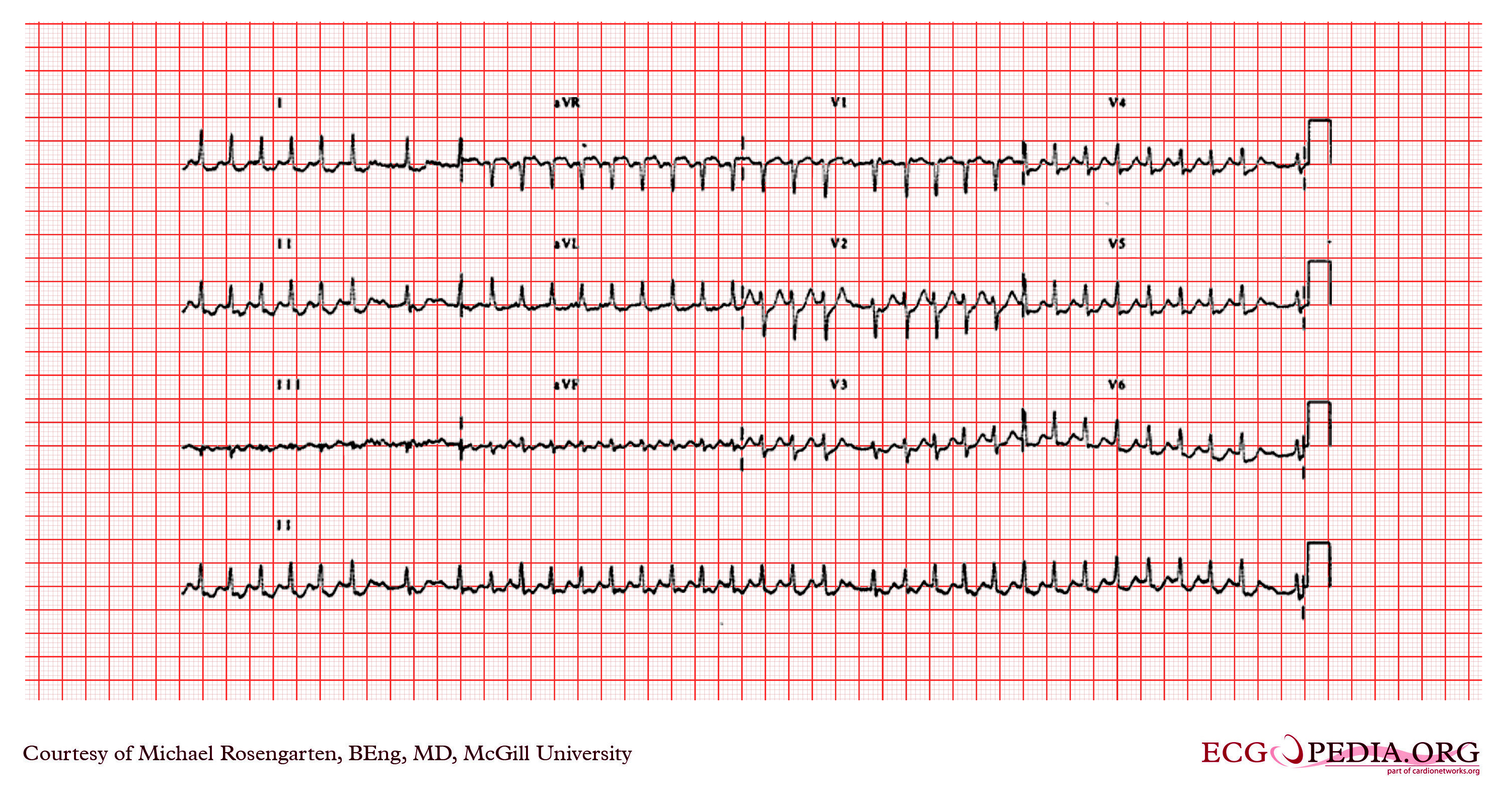Supraventricular tachycardia EKG examples: Difference between revisions
No edit summary |
|||
| Line 2: | Line 2: | ||
{{CMG}} | {{CMG}} | ||
'''For the main page on | '''For the main page on supraventricular tachycardia, click [[Supraventricular tachycardia|here]]''' | ||
== EKG Examples == | == EKG Examples == | ||
Shown below is an electrocardiogram | Shown below is an electrocardiogram depicting supraventricular tachycardia with group ventricular beating with clusters of regular rhythm at about 215 bpm. The regularity and group beating suggest that this is an organized rhythm and not atrial fibrillation. The interval between the 6th and 7th beats in lead II show atrial activity at about 215/min. This is a case where the diltiazem has slowed down the SVT which has allowed faster conduction down the A/V node and hence increased ventricular rate. | ||
[[Image:Supraventricular_tachycardia1.jpg|center|800px]] | [[Image:Supraventricular_tachycardia1.jpg|center|800px]] | ||
Copyleft image obtained courtesy of ECGpedia, http://en.ecgpedia.org/wiki/File:E2722.jpg | Copyleft image obtained courtesy of ECGpedia, http://en.ecgpedia.org/wiki/File:E2722.jpg | ||
---- | ---- | ||
Shown below is an electrocardiogram of a supraventricular tachycardia. There appears to be a | Shown below is an electrocardiogram of a supraventricular tachycardia. There appears to be a [[P wave]] on the last part of the last sinus [[t wave]] suggesting that this may be an ectopic [[atrial tachycardia]] or possibly an atypical form of A/V nodal reentry where one sees the retrograde p wave before the QRS. | ||
[[Image: Supraventricular tachycardia 1.jpg|center|800px]] | [[Image: Supraventricular tachycardia 1.jpg|center|800px]] | ||
Revision as of 22:45, 24 October 2012
Editor-In-Chief: C. Michael Gibson, M.S., M.D. [1]
For the main page on supraventricular tachycardia, click here
EKG Examples
Shown below is an electrocardiogram depicting supraventricular tachycardia with group ventricular beating with clusters of regular rhythm at about 215 bpm. The regularity and group beating suggest that this is an organized rhythm and not atrial fibrillation. The interval between the 6th and 7th beats in lead II show atrial activity at about 215/min. This is a case where the diltiazem has slowed down the SVT which has allowed faster conduction down the A/V node and hence increased ventricular rate.

Copyleft image obtained courtesy of ECGpedia, http://en.ecgpedia.org/wiki/File:E2722.jpg
Shown below is an electrocardiogram of a supraventricular tachycardia. There appears to be a P wave on the last part of the last sinus t wave suggesting that this may be an ectopic atrial tachycardia or possibly an atypical form of A/V nodal reentry where one sees the retrograde p wave before the QRS.

Copyleft image obtained courtesy of ECGpedia, http://en.ecgpedia.org/wiki/Main_Page